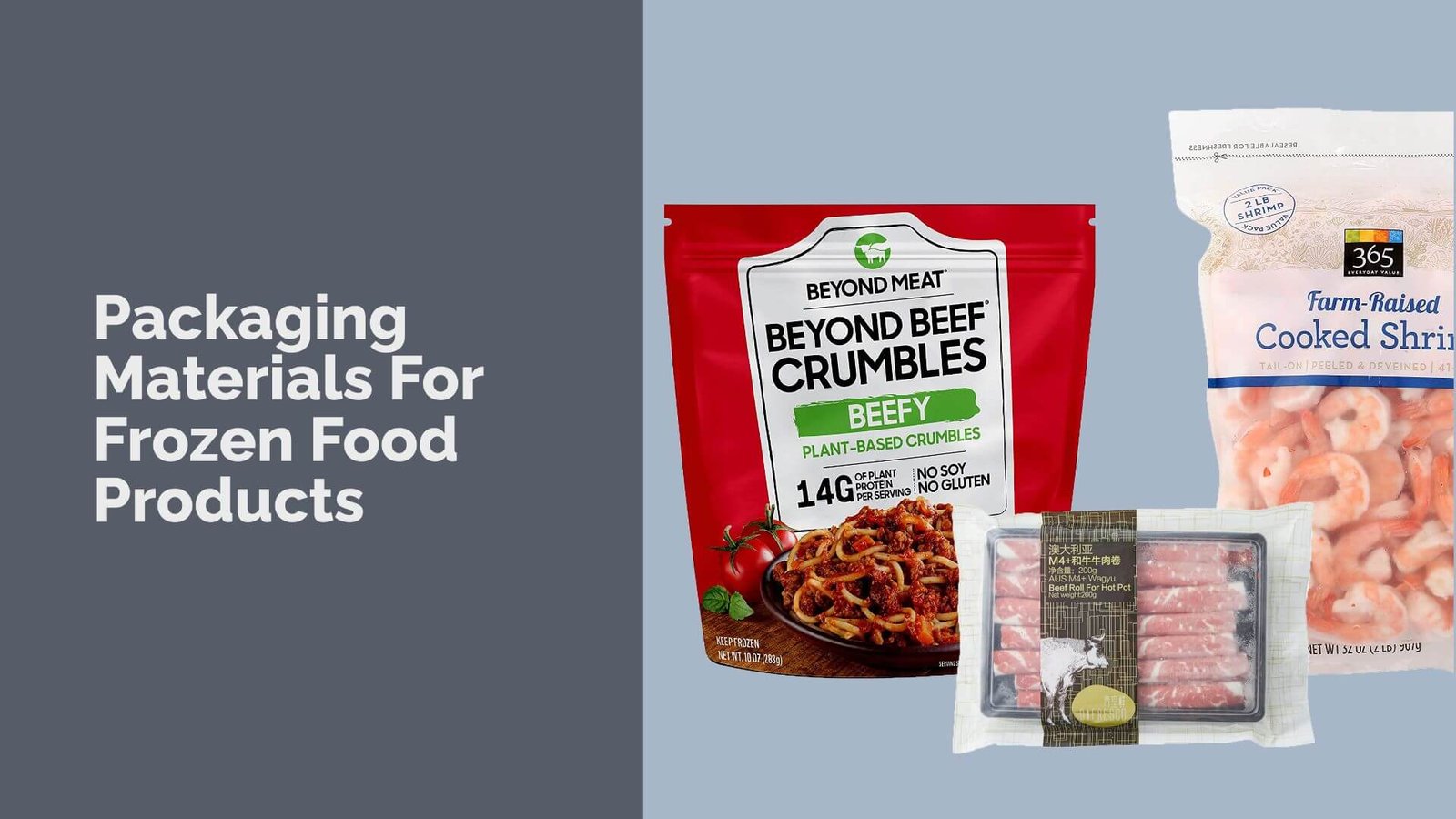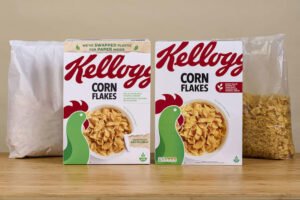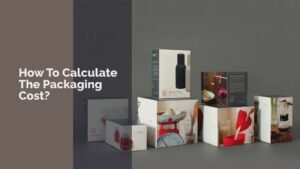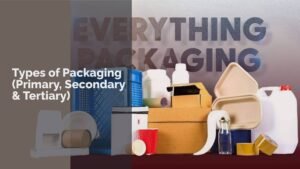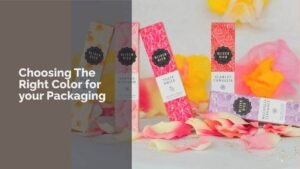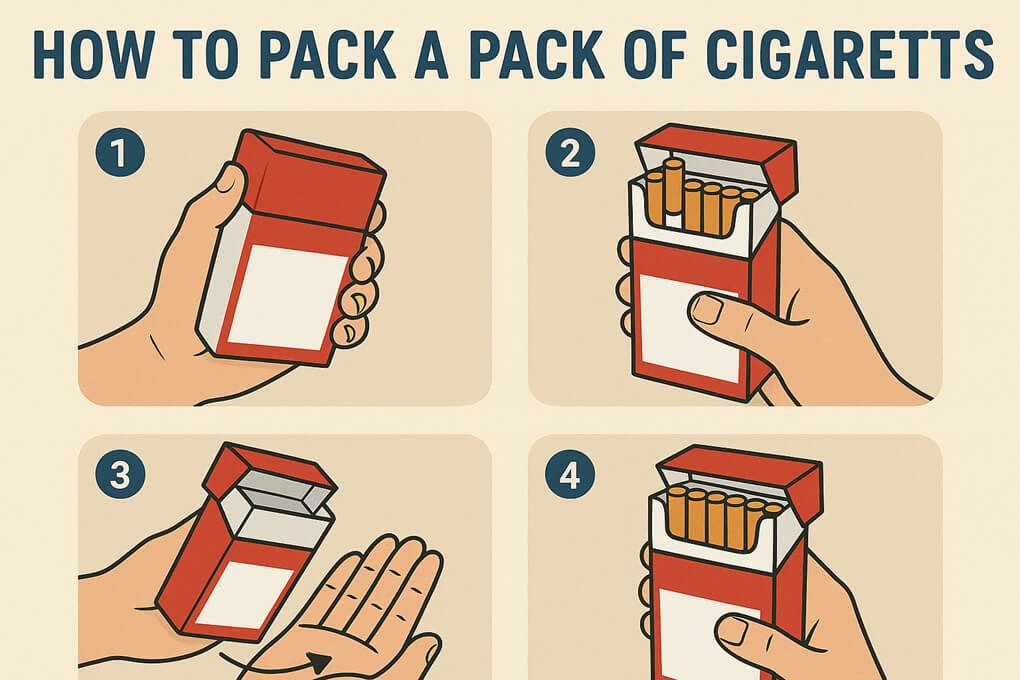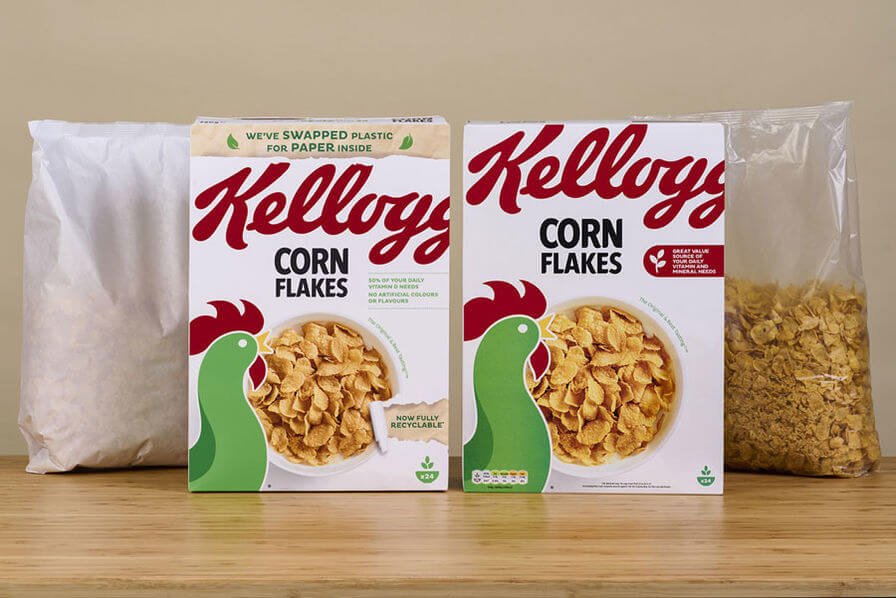Packaging materials for frozen food products are essential for preserving quality, ensuring safety, and extending shelf life. The right materials protect against freezer burn and contamination, making them crucial for both manufacturers and consumers in the frozen food industry.
In this blog post, we will explore the various types of packaging materials suitable for frozen foods, including films, pouches, and rigid containers. We’ll discuss the importance of these materials, their benefits, and how they cater to different frozen food categories such as meats, vegetables, and ready-to-eat meals. Additionally, we’ll provide insights on choosing the right packaging materials and guide you through creating custom packaging tailored to your needs.
What Is Frozen Food Packaging?
Frozen food packaging is a special way to keep food safe and fresh while it is stored in the freezer. It uses materials that can handle very cold temperatures, usually below -18°C. This helps prevent spoilage and keeps the food tasty.
There are many types of packaging materials, like plastic films, bags, and containers, that protect frozen foods. Good packaging also helps keep moisture out and prevents freezer burn.
When done right, frozen food packaging allows people to enjoy their favorite meals later without losing flavor or nutrients. In this blog post, we will learn more about the different materials used for frozen food packaging and why they are important.
Importance Of Materials For Frozen Food Products
When it comes to frozen food products, the importance of proper packaging cannot be overstated. Using the right materials ensures that frozen foods remain fresh and safe throughout their shelf life.
Commonly used materials like plastic films, PE derivatives, and aluminum foil provide essential barriers against moisture and oxygen, preventing freezer burn and spoilage.
For small businesses looking for customized packaging solutions, opting for durable and versatile materials like polyethylene (PE) films and flexible plastic containers is crucial.
This approach not only enhances visibility but also maintains the aesthetic appeal of the product, ultimately influencing consumer purchasing decisions.
At 7 Custom Boxes, we specialize in providing top-notch custom packaging materials for frozen food products, catering to both local and global markets efficiently.
What Films Are Used Or Can Be Used For Frozen Food?
There are several types of films used for frozen food packaging. Polyethylene (PE) film is very popular because it can handle cold temperatures down to -40°C without breaking. Polypropylene (PP) is another option, known for its strength and flexibility.
Aluminum foil is also used, as it keeps food safe from light and moisture. Other films like shrink film and high barrier films, help protect the food from freezer burn and keep it fresh. These films are important for making sure frozen foods stay tasty and safe to eat.
Benefits Of Each Film
Different types of films used for frozen food packaging each offer unique benefits that enhance the preservation and safety of food products. Polyethylene (PE) film is widely recognized for its lightweight nature, flexibility, and excellent moisture barrier properties, making it ideal for preventing freezer burn and extending shelf life.
It is also economical to produce, which is beneficial for businesses looking to reduce costs while maintaining quality.
Low-Density Polyethylene (LDPE) and Linear Low-Density Polyethylene (LLDPE) are particularly valued for their high flexibility and durability, allowing them to adapt to various product shapes while providing strong protection against external elements.
Aluminum foil is another popular option due to its ability to block light and oxygen, further safeguarding the food from spoilage. Each of these films plays a crucial role in ensuring that frozen foods remain fresh, safe, and appealing to consumers.
Types Of Frozen Foods & Best Packaging Materials For Them
Frozen food packaging is essential for preserving the quality and safety of various frozen foods. Different types of frozen foods require specific packaging materials to ensure they remain fresh and appealing to consumers. Below, we explore the best packaging materials for different categories of frozen foods.
Packaging Materials For Frozen Meat & Sea Foods
Frozen meat and seafood require strong packaging materials that can withstand low temperatures and prevent spoilage.
Plastic films and PE derivatives are ideal for vacuum sealing, as they create a tight moisture barrier that keeps the food fresh. Aluminum foil is also commonly used, providing excellent protection against light and oxygen.
Wax-coated paper can be effective for wrapping meats, keeping them moist while preventing freezer burn. These materials not only preserve flavor and texture but also enhance the presentation of frozen meat and seafood, making them appealing to consumers looking for quality products.
Frozen Vegetables & Fruits
For frozen vegetables and fruits, tin cans and flexible packaging like pouches are popular choices. Tin cans provide an airtight seal that protects against moisture and light, ensuring the food retains its nutritional value.
Flexible packaging made from plastic films allows for easy storage and resealing, which is convenient for consumers. Both options help maintain freshness and prevent freezer burn, making them suitable for various frozen fruits and vegetables.
Ready To Eat Frozen Meals
Ready-to-eat frozen meals require packaging that is not only durable but also convenient for consumers. Aluminum foil containers are commonly used because they can go directly from the freezer to the oven, maintaining even cooking temperatures while preventing spoilage.
Additionally, paperboard boxes are often utilized for their lightweight nature and ability to be customized with branding. These boxes protect the meal from freezer burn while allowing easy access for consumers.
Flexible packaging options like stand-up pouches are also gaining popularity, as they offer resealable features that enhance convenience. Using high-barrier films in these packages helps keep moisture out and preserves flavors.
The combination of these materials ensures that ready-to-eat meals remain fresh, flavorful, and easy to prepare, catering to busy lifestyles while meeting consumer demands for quality frozen food products.
Frozen Desserts
Frozen desserts like ice cream benefit from flexible packaging, such as pouches or tubs made from PE derivatives. These materials provide excellent insulation against temperature changes and maintain product integrity.
Additionally, using resealable options allows consumers to enjoy their favorite desserts over multiple servings without compromising freshness.
Frozen Pizzas
Frozen pizzas require sturdy packaging to protect their shape and ingredients during storage and transport. Paperboard boxes are commonly used because they are lightweight yet strong enough to hold the pizza securely.
These boxes can be easily printed with eye-catching designs that attract customers in stores. Inside the box, plastic films often wrap individual pizzas to prevent freezer burn while maintaining freshness.
For added protection, some brands use aluminum foil liners within the boxes to enhance insulation and prevent moisture loss.
This combination of packaging materials ensures that frozen pizzas maintain their quality from production to consumption, making them a popular choice among consumers looking for convenient meal options.
Baked Goods & Dough
Baked goods and dough products require packaging that maintains freshness while allowing some breathability to prevent sogginess.
Wax-coated paper is an excellent choice for wrapping items like pastries or bread rolls, as it keeps moisture in while allowing air circulation. For dough products, plastic films provide a tight seal that prevents drying out during freezing.
Additionally, using rigid plastic containers can help protect delicate baked goods from crushing during transport.
These materials work together to ensure that baked goods retain their flavor and texture, appealing to consumers who appreciate quality in their frozen treats.
Factors To Consider When Choosing The Suitable Frozen Food Packaging Materials
Choosing the right packaging materials for frozen food products is crucial to ensure quality, safety, and consumer satisfaction.
Several factors must be considered when selecting suitable frozen food packaging, including material type, barrier protection, durability, seal integrity, microwave safety, visibility, consumer convenience, and eco-friendliness.
Materials
The choice of materials is fundamental when it comes to frozen food packaging. Common options include plastic films, PE derivatives, aluminum foil, and paperboard. Each material has its advantages: plastic films are flexible and moisture-resistant, while aluminum foil provides excellent protection against light and oxygen.
For businesses looking for custom packaging materials for frozen food products, understanding the specific needs of the product is essential.
For example, rigid plastic containers are ideal for items like frozen pizzas or baked goods, while flexible pouches work well for frozen fruits and vegetables. Selecting the right materials ensures that the food remains fresh and appealing.
Barrier Protection
Barrier protection is vital in frozen food packaging to prevent moisture and oxygen from degrading the product.
High-barrier films are designed to block out these elements, which helps avoid freezer burn and spoilage. When selecting packaging materials for frozen food products, consider options like aluminum foil or specialized plastic films that offer superior barrier properties.
This protection not only preserves the quality of the food but also extends its shelf life, making it a key factor in packaging decisions.
Durability & Resistance To Temperature Changes
Durability and resistance to temperature changes are critical factors when choosing packaging materials for frozen foods. Packaging must withstand extreme cold without cracking or breaking. Materials like polyethylene (PE) and polypropylene (PP) are known for their resilience at low temperatures, making them ideal choices for freezing applications.
Additionally, the packaging should maintain its integrity during transportation and storage. Rigid plastic containers provide excellent durability for heavier items like frozen meats or pizzas, while flexible films can adapt to various shapes without compromising strength.
For small businesses looking for wholesale options in frozen food packaging, it’s essential to select materials that not only protect the product but also maintain its quality throughout its shelf life. Properly designed packaging will resist temperature fluctuations and physical stress, ensuring that consumers receive their frozen foods in perfect condition.
Seal Integrity
Seal integrity is crucial in maintaining the freshness of frozen food products. A good seal prevents air from entering the package, which can lead to freezer burn and spoilage. When selecting packaging materials for frozen foods, look for options that offer strong sealing capabilities, such as heat-sealable films or containers with snap-on lids.
Proper sealing techniques ensure that the contents remain protected during storage and transport. For businesses offering custom packaging materials for frozen food products, investing in high-quality sealing technology can significantly enhance product quality and customer satisfaction by providing reliable protection against contamination.
Microwave Safety
Microwave safety is an important consideration when choosing packaging for frozen foods. Consumers often prefer packaging that can go directly from the freezer to the microwave without any issues.
Materials like certain types of plastic films or specially designed containers are microwave-safe and prevent harmful chemicals from leaching into food during heating. Ensuring that your frozen food packaging meets microwave safety standards will enhance convenience for consumers and encourage repeat purchases.
Visibility & Aesthetics
Visibility and aesthetics play a significant role in attracting consumers to frozen food products. Packaging should not only protect the food but also showcase it appealingly on store shelves.
Clear plastic films or windows on boxes allow customers to see the product inside, enhancing their purchasing decision.
Custom branding on paperboard boxes or vibrant graphics on flexible pouches can also make a product stand out in a crowded market. By focusing on visibility and aesthetics in your custom packaging materials for frozen food products, you can create an inviting presentation that appeals to consumers’ preferences.
Consumer Convenience
Consumer convenience is a key factor in selecting suitable frozen food packaging materials. Packaging should be easy to open, resealable if necessary, and user-friendly overall. For example, flexible pouches with zip closures allow consumers to access their favorite snacks without hassle.
Additionally, clear instructions on how to prepare or cook the product can enhance user experience. By prioritizing convenience in your custom packaging solutions for frozen foods, you can cater to busy lifestyles while ensuring customer satisfaction.
This focus on ease of use helps build brand loyalty among consumers who appreciate thoughtful design in their food packaging.
Eco-Friendliness
Eco-friendliness is becoming increasingly important in consumer choices today. When selecting packaging materials for frozen food products, consider options that are recyclable or made from sustainable sources. Materials like biodegradable films or recycled paperboard can appeal to environmentally conscious consumers.
By incorporating eco-friendly practices into your custom packaging solutions for frozen foods, you not only contribute positively to the environment but also attract a growing segment of consumers who prioritize sustainability in their purchasing decisions.
Creating Your Own Custom Frozen Food Packaging In 7 Simple Steps
Creating your own custom frozen food packaging can be a straightforward process when broken down into simple steps. By following these seven steps, you can ensure that your packaging meets the specific needs of your frozen food products while also appealing to consumers. This guide will help you navigate the essentials of designing effective and attractive packaging.
Packaging Requirements
The first step in creating custom frozen food packaging is to define your packaging requirements. Consider the type of frozen food products you offer, such as meats, vegetables, or ready-to-eat meals, as each has unique needs.
For instance, frozen meat requires robust barrier protection to prevent spoilage, while frozen desserts may need resealable features for convenience.
Understanding these requirements ensures that your packaging materials—whether plastic films, aluminum foil, or paperboard—effectively preserve the quality and safety of your products. By clearly outlining these needs from the start, you set a solid foundation for the rest of the packaging process.
Select Packaging Manufacturer
Choosing the right packaging manufacturer is crucial for ensuring quality and consistency in your custom frozen food packaging. Look for a manufacturer with experience in producing packaging specifically designed for frozen foods.
They should offer a variety of materials, such as PE derivatives and flexible pouches, tailored to meet your product’s requirements. Collaborating with a knowledgeable manufacturer ensures that your packaging not only protects the food but also aligns with industry standards for safety and durability.
Choose Packaging Design
The design of your custom frozen food packaging plays a significant role in attracting consumers and conveying your brand identity. Start by considering how the design can enhance visibility on store shelves while also providing essential information about the product. Use vibrant colors and appealing graphics to make your packaging stand out among competitors.
Incorporate elements that reflect your brand’s ethos, such as eco-friendly messaging if you use sustainable materials. For example, if you’re offering frozen vegetables, a design featuring fresh imagery can communicate quality and freshness effectively.
Additionally, think about practical aspects like easy-open features or resealable options that improve consumer convenience.
The design should not only be visually appealing but also functional, ensuring that it protects the product during transportation and storage. By marrying aesthetics with practicality, you create a compelling package that encourages repeat purchases.
Choose Packaging Material
Selecting the right packaging material is critical for preserving the integrity of your frozen food products. Different types of foods require different materials; for instance, plastic films and aluminum foil are excellent choices for vacuum-sealed meats due to their strong barrier properties against moisture and oxygen.
For frozen vegetables and fruits, consider using flexible packaging options like stand-up pouches that allow visibility while maintaining freshness. Rigid plastic containers work well for ready-to-eat meals or baked goods, providing structural support during transport.
When choosing materials, prioritize those that are compatible with freezing temperatures and can withstand low conditions without becoming brittle or losing seal integrity.
By carefully selecting suitable materials for each product type, you ensure that your custom frozen food packaging meets both safety standards and consumer expectations.
Evaluate Prototype
Once you’ve selected your materials and design, it’s essential to evaluate prototypes before mass production.
Testing prototypes allows you to assess how well the packaging protects the product under freezing conditions and during transportation. Check for seal integrity to ensure there are no leaks or air exposure that could lead to freezer burn.
Gather feedback from potential customers regarding usability and aesthetics to refine your design further. This step is crucial in identifying any issues early on so you can make necessary adjustments before launching your custom frozen food packaging into the market.
Consider The Unboxing Experience
The unboxing experience is an often-overlooked aspect of custom frozen food packaging that can significantly impact consumer satisfaction. Incorporate user-friendly features such as easy-open seals or resealable closures to enhance convenience.
Consider adding clear instructions or nutritional information on the package to guide consumers through preparation. A positive unboxing experience encourages repeat purchases and builds brand loyalty, making it essential to focus on how consumers interact with your packaging once they receive it.
Focus On Sustainability
Sustainability is increasingly important in today’s market, especially in the food industry. When creating custom frozen food packaging, consider using eco-friendly materials such as biodegradable films or recycled paperboard options.
This not only appeals to environmentally conscious consumers but also aligns with growing regulations regarding sustainable practices in packaging. By focusing on sustainability in your custom packaging solutions, you demonstrate a commitment to reducing environmental impact without compromising product quality.
At 7 Custom Boxes, we specialize in providing innovative and sustainable custom frozen food packaging solutions tailored to meet your unique needs while ensuring freshness and safety for all types of frozen foods.
Best Custom Frozen Food Box Manufacturer In The United States
If you’re looking for the best custom frozen food box manufacturer in the United States, consider 7 Custom Boxes. They specialize in creating high-quality, custom frozen food packaging that keeps your products fresh and safe.
With options like plastic films and eco-friendly materials, they cater to small businesses needing custom packaging solutions. Their expertise ensures your frozen food packaging meets all requirements while standing out on store shelves.
Choose 7 Custom Boxes for reliable, attractive, and effective packaging that enhances your brand’s visibility and appeal!
FAQ’s
Can your frozen food packaging be recycled?
Yes, some frozen food packaging can be recycled, depending on the materials used. For example, plastic films made from LDPE are often recyclable, while paperboard and cardboard options can typically be recycled as well. It’s important to check local recycling guidelines for specifics.
Do you offer sustainable or eco-friendly packaging options for frozen food?
Yes, we provide a variety of sustainable and eco-friendly packaging options for frozen food products. Our custom packaging includes recyclable materials and biodegradable films, helping businesses reduce their environmental impact while ensuring their frozen food remains fresh and safe for consumers.
What is the best frozen food packaging option for large shipments?
For large shipments of frozen food, rigid plastic containers and cardboard boxes are ideal choices. These materials provide excellent protection during transport and can withstand temperature fluctuations, ensuring that your products arrive safely and in good condition.
What types of frozen food packaging do you offer?
We offer a wide range of custom frozen food packaging options, including plastic films, flexible pouches, aluminum foil containers, and paperboard boxes. Each type is designed to protect your products while enhancing their visual appeal on store shelves.
What is your turnaround time on frozen food packaging?
Our typical turnaround time for custom frozen food packaging is between 2 to 4 weeks, depending on the complexity of the design and order size. We strive to meet urgent requests while maintaining high-quality standards for our products.
What are the barrier requirements for frozen food packaging?
Barrier requirements for frozen food packaging are essential to prevent spoilage and maintain quality. Packaging must effectively block moisture, oxygen, and light. Materials like high-barrier films and aluminum foil are commonly used to ensure optimal protection for frozen foods.
Can you put a window on frozen packaging?
Yes, we can add a window to your custom frozen food packaging! This feature allows consumers to see the product inside, enhancing its visual appeal while maintaining quality. We can help design attractive packaging that showcases your frozen products effectively.

